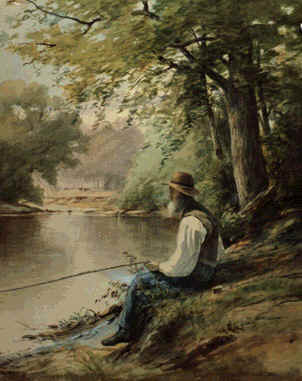Palenville Overlook
In the classic Washington Irving tale, Rip Van Winkle becomes one of the earliest sight seers in the Catskills. In the first paragraph he gives us the view from the Pine Orchard, to become four years later the site of the Catskill Mountain House. In the second paragraph, he gives Americans their first view into Kaaterskill Clove. Irving has judiciously sent Rip up the mountain during the fall, the very best time for the American landscape to distinguish itself, according to Thomas Cole.
In a long ramble… on a fine autumnal day, Rip has unconsciously scrambled to one of the highest parts of the Kaatskill mountains. …Panting and fatigued, he threw himself, late in the afternoon, on a green knoll, covered with mountain herbage, that crowned the brow of a precipice. From an opening between the trees, he could overlook all the lower country for many a mile of rich woodland. He saw at a distance the lordly Hudson far below him, moving on its silent but majestic course, the reflection of a purple cloud, or the sail of a lagging bark, here and there sleeping on its glassy bosom, and at last losing itself in the blue highlands.
On the other side he looked down into a deep mountain glen, wild, lonely, and shagged, the bottom filled with fragments from the impending cliffs, and scarcely lighted by the reflected rays of the setting sun.”
Washington Irving, from The Sketchbook of Geoffrey Crayon, Gent.

Junius Sloan (1827-1900), Landscape Fisherman, Hindsdale, Illinois, watercolor on paper, 14 1/2 x 11 5/8 inches. Brauer Museum of Art, Percy H. Sloan Trust. 53.101.337.
A Virtual Exhibition sponsored by the Valparaiso University Brauer Museum of Art
- Junius Sloan’s Kaaterskill Lakes and the Catskill Mountain House: The Story of an American Cultural Icon
- Site 2: View from Mountain House
- Site 3: Mountain House
- Site 4: Description of Mountain
- Site 5: Kaaterskill Falls
- Site 6: Kaaterskill Clove, West
- Site 7: Kaaterskill Clove, East
- Site 8: In Kaaterskill Clove
- Site 9: Palenville Overlook